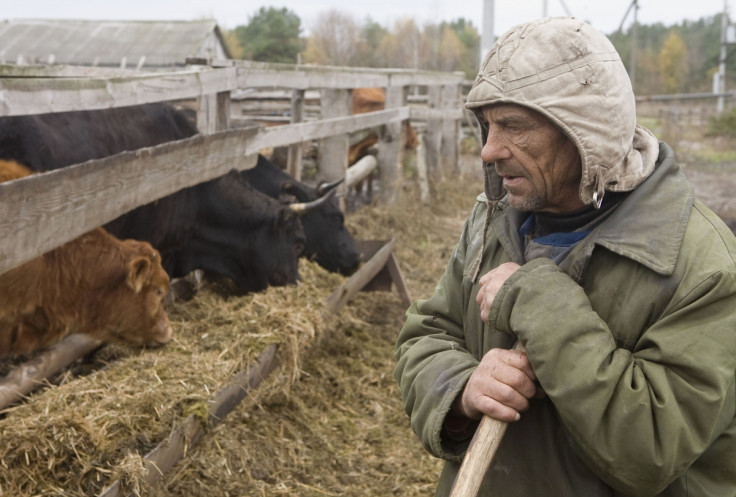Greenpeace: Chernobyl locals still eat radioactive food 30 years after nuclear disaster

Locals from the Chernobyl area are still eating contaminated radioactive food 30 years on, according to NGO Greenpeace.
Tests carried out for the group shows some radioactive elements remain in the grounds and forests around the Ukrainian plant, where a huge nuclear explosion took place in April 1986. Although all the radioactive iodine, the component which targets the thyroid gland and may cause thyroid cancer, is gone; other radioactive elements are still present, due to their longer half-life.
Caesium-137 for instance, which has a half-life of 30 years, was found in the environment following the Greenpeace test, as well as Strontium-90 (half-life of 28 years).
Contaminated food
Radioactive contamination through food is common in the wake of a nuclear accident. According to the WHO, radioactive material falling from the air or carried by the rain can deposit on the surface of crops and animals' food. In the long term, radioactivity can build up within food, as radioactive elements are transferred through soil into crops or animals.

In Chernobyl, five million people now live in the areas that were affected by radioactive fallout. Most of their exposure today comes from food and from milk from the cows grazing on the contaminated land.
Greenpeace also points out that the exposure to these radioactive material is currently made worse by the fact Ukraine is currently suffering from a large-scale economic crisis. This means the government is no longer able to implement programs designed to protect the public against radiations.
Unclear cancer risk
There is strong evidence that a lot of Chernobyl children who developed thyroid cancer after 1986 had received strong doses of radioactive iodine, because of the milk they drank. "Since radioactive iodine is short lived, if people had stopped giving locally supplied contaminated milk to children for a few months following the accident, it is likely that most of the increase in radiation-induced thyroid cancer would not have resulted", WHO experts point out.
However, it remains to be seen how caesium-137 and Strontium-90 which remain affect the population living in the area today. Even though it is known that the cancer risk increases proportionally with the dose, radiation is often difficult to distinguish from other risk factors when a cancer is diagnosed.
© Copyright IBTimes 2024. All rights reserved.






